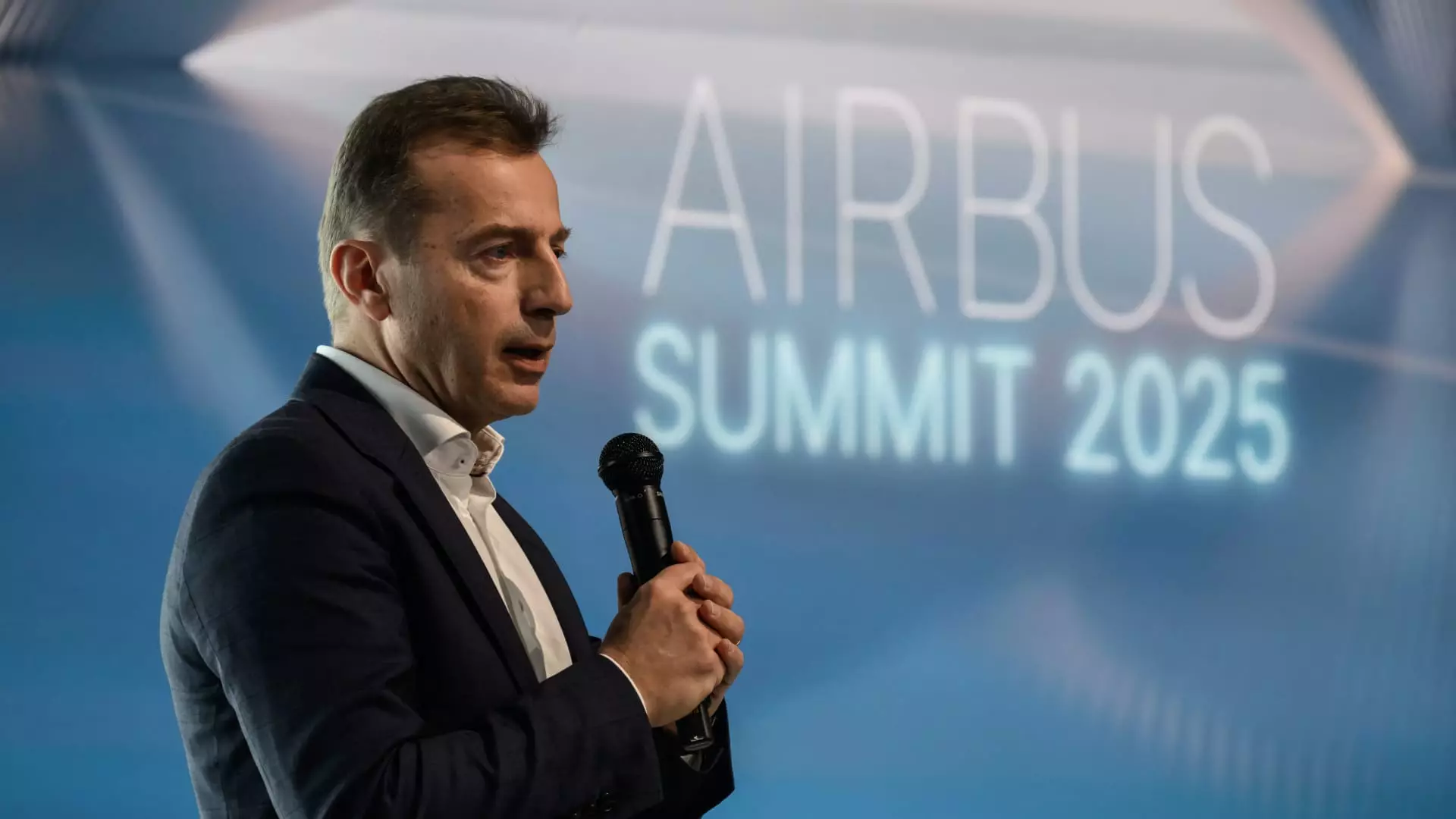The aviation industry stands at a crossroads, strained by ongoing engine production delays that threaten to undermine its growth trajectory. Despite assurances from Airbus CEO Guillaume Faury that the company remains on track to deliver approximately 820 aircraft in 2025, the reality behind these optimistic claims is far more complex. The backlog of finished planes waiting for engines—referred to as “gliders”—symbolizes systemic issues that jeopardize the industry’s future. These delays are not mere inconveniences; they reveal fundamental weaknesses in supply chain resilience and question the sustainability of current production targets.
Faury expresses cautious optimism, citing commitments from engine manufacturers CFM and Pratt & Whitney to meet delivery schedules. However, industry insiders recognize that engine defects and labor disputes, including worker strikes, have become significant hurdles, casting doubt on whether these promises will materialize as expected. The over-reliance on third-party engine suppliers exposes Airbus, and by extension the entire aerospace industry, to vulnerabilities that could result in cascading delays and unmet delivery goals.
The comparison with Boeing’s performance—continuing to lag behind Airbus with fewer aircraft delivered—highlight the uneven landscape of the aviation market. While Airbus pushes forward, seemingly confident, the underlying fragility of its supply chain remains an open secret. The gap in aircraft deliveries underscores a broader point: sustained growth is increasingly contingent on overcoming technical, logistical, and labor-related obstacles that threaten to stall progress.
Geopolitical and Economic Uncertainty: The Hidden Enemy
Beyond technical setbacks, the industry’s stability hinges on the political and economic climate—a landscape characterized by unpredictability and volatility. Recent tariff policies, especially during the Trump administration, emphasized the delicate balance in international trade relations. While the current U.S.-EU trade agreement has temporarily shielded the industry from punitive tariffs, this reprieve may be short-lived. Such political brinkmanship introduces an element of risk that manufacturers like Airbus and Boeing must constantly navigate.
Faury’s remarks about the importance of “predictability” resonate deeply in a climate where global trade is increasingly unpredictable. Political decisions, tariffs, and trade agreements directly influence manufacturing costs, supply chain logistics, and ultimately, the affordability of aircraft. This volatile environment hampers long-term strategic planning and dampens investor confidence. The aviation sector, known for its cyclical tendencies and high capital requirements, cannot afford frequent policy oscillations that force companies to recalibrate billions of dollars in operations at short notice.
More troubling is the broader economic uncertainty that looms overhead. Fluctuating demand, inflationary pressures, and geopolitical tensions create a fog of unpredictability that stifles innovation and investment. Airbus’s insistence on maintaining delivery commitments amid these headwinds demonstrates admirable resilience, but it also highlights how political and economic instability are increasingly becoming the unseen enemies threatening the industry’s future stability.
The Need for a Center-Left Approach in Tackling Industry Challenges
Faced with these complex challenges, it becomes evident that a centrist, pragmatic approach rooted in balanced policies and careful oversight is essential. Heavy-handed protectionism or overly optimistic forecasts fail to recognize the structural vulnerabilities exposed by delays and political unrest. Instead, fostering international cooperation, transparent communication, and targeted investments in supply chain resilience can fortify the industry against external shocks.
A center-left perspective advocates for strategic government intervention that supports innovation, worker protections, and sustainable growth—without resorting to tariffs or protectionist policies that could further destabilize the market. Promoting collaborative efforts among manufacturers, regulators, and workers can help address quality issues and labor disputes more effectively, smoothing out the bumps in the production pipeline.
Ultimately, the aviation industry’s future will depend on our collective ability to balance growth ambitions with pragmatic resilience measures. Recognizing that technical delays, political uncertainties, and economic fluctuations are intertwined forces shaping the landscape is vital. Instead of blindly chasing lofty targets, stakeholders should prioritize building a robust, adaptive framework capable of weathering the inevitable storms ahead.

